#pneumonia treatment in hospital
Explore tagged Tumblr posts
Text
Understanding Pneumonia: Symptoms, Causes & Treatment Insights
Explore the symptoms, causes, and treatment options for pneumonia. Get informed on how to effectively combat this respiratory illness and recover quickly.
To know more:
#best pulmonologist in Karimnagar#md pulmonologist near me#best pediatric pulmonologist near me#bacterial pneumonia treatment#pneumonia treatment in hospital#respiratory infection treatment
0 notes
Text
week 1 of very little internet down- 207 or more to go ✌️
#i do get the irony of coming here to talk about it#but i went and bowled badly but had fun and helped a friend with garden prep and made glass art with my mom :)#sometimes the world is a fuck and sometimes your patient at work who just finished curative treatments#ends up in the hospital with aspiration pneumonia and gets sepsis and dies#so like#working in oncology really does punch u in the face with perspective sometimes#textthingamabob
3 notes
·
View notes
Text
speaking from direct experience here, please mask up especially if you are living in chicago rn. for covid reasons obviously but also RSV (Respiratory syncytial virus) has been spreading like crazy and it can develop into pneumonia or other respiratory disorders in people who are elderly, immunocompromised, and babies/young children.
basically every day i feel like i have to post this meme i made a while back
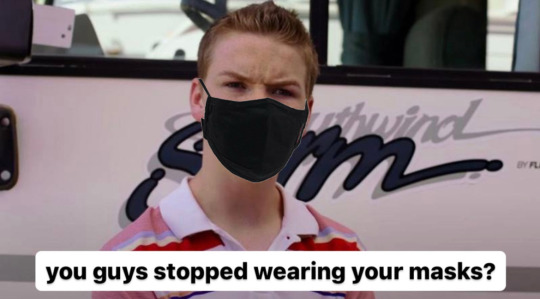
#everybody in my house is sick with it except my sister#my nana and nephew both got pneumonia from it#she’s currently being hospitalized since saturday . he’s been back and forth to the er#all my nieces got it too. one year old niece keeps having to go back to the hospital bronchitis vapor treatments#nurse that was treating my nan’s saturday night told me it’s ravaging the hospital and they’re down on staff because of it too#please wear a mask
29K notes
·
View notes
Text
Looking for the best pulmonologist in Chandigarh? Mukat Hospital offers expert respiratory care for asthma, COPD, lung infections, and more. Book an appointment today!
#Best pulmonologist in Chandigarh#pulmonologist in Chandigarh#lung specialist in Chandigarh#respiratory doctor Chandigarh#chest specialist in Chandigarh#asthma treatment Chandigarh#COPD specialist Chandigarh#lung infection treatment#bronchitis doctor Chandigarh#pneumonia specialist Chandigarh#best hospital for pulmonology#respiratory care hospital Chandigarh#Mukat Hospital pulmonologist#expert lung doctor Chandigarh
1 note
·
View note
Text
Pope's condition stable, chest X-ray shows improvement: Vatican - The Times of India
Pope Francis remains in stable condition, with chest X-rays showing continued improvement, according to the Vatican’s Wednesday statement, nearly a month after he was hospitalised with pneumonia.The Vatican’s medical bulletin stated, “The clinical conditions of the Holy Father have remained stationary (stable), within the complexity of the general picture,” it said in a medical bulletin.“The…
#Pope Francis chest X-ray results#Pope Francis health update#Pope Francis hospital stay#Pope Francis improves condition#Pope Francis return home#Pope Francis stable condition#Pope pneumonia treatment#Vatican news
0 notes
Text

#chest hospitals in hyderabad#best pulmonology hospital in hyderabad#lungs specialist hospital in hyderabad#best chest hospital in hyderabad#pulmonologist hospital in hyderabad#best hospital for lungs treatment in hyderabad#lungs hospital hyderabad#best hospital for lung transplant in hyderabad#best hospital for pneumonia in hyderabad#best hospital for pulmonology in hyderabad
0 notes
Text
Treatment Options for Bacterial Pneumonia in Dogs and Cats
Bacterial pneumonia in dogs and cats is a serious respiratory condition that affects both dogs and cats. It can lead to severe health issues if not treated promptly. At Tri-County Animal Hospital, we prioritize your pet’s health and well-being, offering comprehensive treatment options for bacterial pneumonia in pets. Understanding the treatment options available can help pet owners make informed decisions and ensure their furry friends receive the best care possible.

Understanding Bacterial Pneumonia in Pets
Bacterial pneumonia is an infection of the lungs caused by bacteria, leading to inflammation and difficulty breathing. Common bacteria that cause pneumonia in pets include Bordetella bronchiseptica, Streptococcus, and Staphylococcus species. Pets with bacterial pneumonia often show symptoms such as coughing, difficulty breathing, lethargy, fever, and loss of appetite. If you notice any of these signs, it is crucial to seek veterinary attention immediately.
Diagnostic Process
Before starting treatment, a thorough diagnosis is essential. At Tri-County Animal Hospital, our veterinarians perform a series of diagnostic tests to confirm bacterial pneumonia and identify the causative bacteria. These tests may include:
Physical Examination: Listening to the lungs for abnormal sounds like crackles or wheezes.
Chest X-rays: To visualize the lungs and identify areas of infection and inflammation.
Blood Tests: To assess the overall health of the pet and identify any underlying conditions.
Tracheal Wash or Bronchoalveolar Lavage: Collecting samples from the lower airways to identify the specific bacteria causing the infection.
Treatment Options for Pet’s Bacterial Pneumonia
Once bacterial pneumonia in pets is diagnosed, prompt and effective treatment is necessary to ensure a full recovery. The treatment plan typically includes the following:
Antibiotic Therapy
The cornerstone of treating bacterial pneumonia in dogs and cats is antibiotic therapy. The choice of antibiotics depends on the type of bacteria identified and their sensitivity to specific drugs. Commonly used antibiotics include amoxicillin, doxycycline, and enrofloxacin. The treatment duration usually ranges from two to six weeks, depending on the severity of the infection and the pet's response to the medication. It is crucial to follow the veterinarian’s prescription and complete the entire course of antibiotics, even if the pet’s symptoms improve before the medication is finished.
Supportive Care
Supportive care is essential to help pets recover from bacterial pneumonia. This may include:
Hydration: Ensuring the pet remains well-hydrated to thin mucus and support lung function. In severe cases, intravenous fluids may be necessary.
Nutritional Support: Providing a high-quality, nutritious diet to support the immune system and overall health.
Oxygen Therapy: For pets with severe breathing difficulties, oxygen therapy may be administered to improve oxygen levels in the blood.
Nebulization and Coupage
Nebulization involves the administration of aerosolized medications to the lungs, helping to loosen mucus and improve breathing. Coupage, a technique that involves gently tapping the chest, can help loosen and clear mucus from the lungs. At Tri-County Animal Hospital, we demonstrate these techniques to pet owners for at-home care.
Anti-inflammatory Medications
In some cases, anti-inflammatory medications may be prescribed to reduce lung inflammation and alleviate symptoms. These medications should only be used under the guidance of a veterinarian, as improper use can have adverse effects.
Rest and Recovery
Ensuring that pets get plenty of rest is crucial for their recovery. Limiting physical activity and providing a calm, stress-free environment can help pets heal faster. It’s important to monitor your pet closely and follow any specific care instructions provided by the veterinarian.
Follow-up Care
Regular follow-up visits to Tri-County Animal Hospital are essential to monitor the pet’s progress and adjust the treatment plan as needed. Follow-up chest X-rays and physical examinations help ensure that the infection is resolving and that there are no complications. In some cases, additional diagnostic tests may be required to confirm the pet's recovery.
Preventing Bacterial Pneumonia in Pets
Prevention is always better than cure. Here are some tips to reduce the risk of bacterial pneumonia in pets:
Vaccination: Ensure your pets are up-to-date on their vaccinations, especially those protecting against respiratory infections.
Good Hygiene: Maintain a clean living environment for your pets, and avoid exposing them to other animals with respiratory infections.
Regular Veterinary Check-ups: Routine health check-ups at Tri-County Animal Hospital can help detect and manage underlying health issues that may predispose pets to pneumonia.
Healthy Diet: Provide a balanced diet to support your pet's immune system and overall health.
Conclusion
Bacterial pneumonia in dogs and cats is a serious condition that requires prompt and effective treatment. At Tri-County Animal Hospital, we are dedicated to providing comprehensive care to help your pets recover and thrive. By understanding the treatment options and following the veterinarian's guidance, pet owners can ensure their furry friends receive the best possible care and make a full recovery. If you suspect your pet has bacterial pneumonia, don’t hesitate to contact us for an evaluation and personalized treatment plan.
#Bacterial Pneumonia in Pets#Bacterial Pneumonia in Dogs#Bacterial Pneumonia in Cats#Dog and Cat Respiratory Health#Tri-County Animal Hospital#Pet Pneumonia Treatment#Comprehensive Pet Care#Veterinary Pneumonia Treatment#Respiratory Conditions in Dogs and Cats#Pet Health Information#Treating Pneumonia in Pets
0 notes
Text
This Giving Tuesday, we ask you to consider donating to Alley Cat Rescue’s Life-saving Program, which is used to ensure we can get cats with urgent medical care.
This program will ensure that ACR can continue to help save cats that are who are severely ill or injured. Cats in such poor shape don't have time to wait for the funds to be raised.
In the past, we have used Alley Cat Rescue’s Life-saving Program funding to save numerous lives.
.....
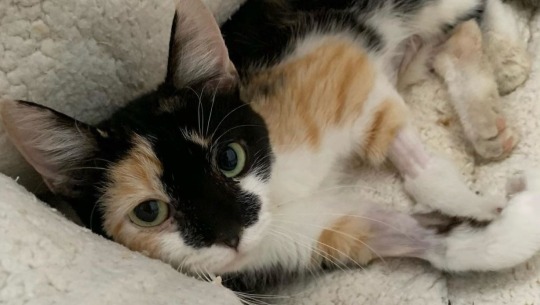
MAIZIE - Late one Sunday, we were alerted to a very young mama cat who was stuck at a city shelter and had been in labor all day. She had given birth to four stillborn babies early in the morning and was still suffering. She needed to see a vet as soon as possible.
Maizie was rushed to an emergency vet and it was determined that there was one large kitten still in the birth canal. Sadly, the kitten had no heartbeat, The vet performed an emergency c-section as Maze would not have survived otherwise. She was also severely anemic as she lost a lot of blood with the placentas for each birth. She was in intensive care and is now being monitored closely. Unfortunately, she's suffered permanent nerve damage to her back legs.
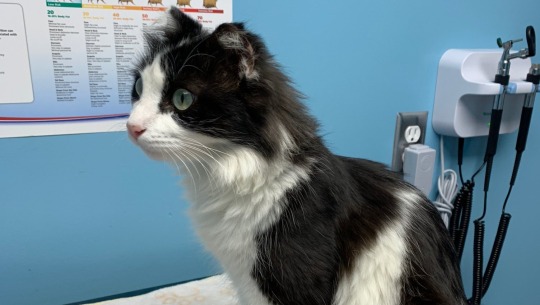
OLIVE was found by our Los Angeles team with her ears mutilated and a back leg broken in two places. She needed her leg amputated but after recovery, she was pain free and adopted.
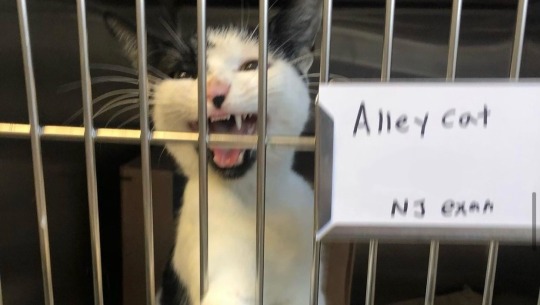
SIMONE (aka Cally) came to us with three nursing kittens and a severe viral infection. Her fever shot up to 105 and we rushed her to an emergency clinic. Simone stayed at the clinic for a week, receiving IV antibiotics, fluids, anti-nausesa medication, and many tests.
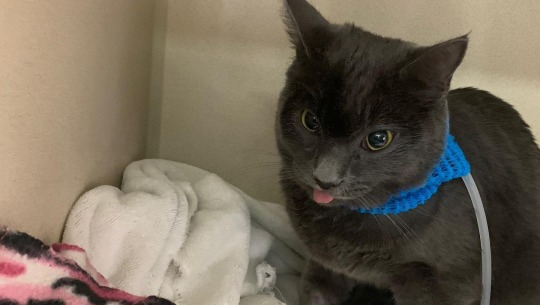
ASH's jaw was badly broken in a domestic violence situation, leaving him in terrible pain and unable to eat. He required a feeding tube, hospitalization, and three surgeries.
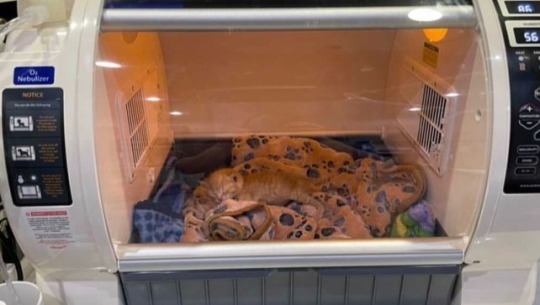
TEDDY was only a few days old when he developed pneumonia. He spent several days at the vet, requiring round-the-clock monitoring and care. He also required a feeding tube because he was so congested that he could not eat and breathe at the same time, and he was placed in an incubator.

ROO was born with both back legs wrapped around his body and badly deformed. ACR got him physical therapy, massages, and laser treatment, which fixed his legs. Though he eventually lost his right paw, ACR was able to give him complete mobility.

BUBBLEGUM was born 1/4 the size of his littermates. He's had multiple issues including a heart murmur, digestive trouble, and delayed growth. we have taken him to the veterinarian and multiple veterinary specialists many times throughout his development to try to determine what is wrong. Almost an adult now, he shows signs of weakness and has an enlarged spleen and lymph nodes, inflamed gums and teeth, and ACR continues to work with vets and specialists on his healing
......
Some cats need emergency treatment for a week, recover, and then find their forever home. Others require continued or follow up care for much longer. We are gratified to be able to give happy endings to kittens and cats in dire need. Please help us continue to do this by donating to Alley Cat Rescue's life-saving program this #GivingTuesday.
1K notes
·
View notes
Text
"A new study evaluated a low-cost yet effective way to combat bacterial resistance using curcumin–the natural yellow plant compound in turmeric.
In 2017, a tragic death in a Nevada hospital was linked to a new strain of bacteria that had developed a resistance to 26 different antibiotics. Called ‘superbugs’, such antibiotic-resistant bacteria (including MRSA) remains a pressing public health threat.
Now researchers at Texas A&M University have shown that curcumin, the compound that gives turmeric its characteristic bright yellow color, can be used to reduce this antibiotic resistance.
They showed that when curcumin is intentionally given to bacteria as food, and then activated by light, it can trigger deleterious reactions within these microbes, eventually killing them. They demonstrated that this process reduces the number of antibiotic-resistant strains and renders conventional antibiotics effective again.
The results of the study were published this week in the journal Scientific Reports.
“We need alternative ways to either kill the superbugs or find a novel way to modify natural processes within the bacteria so that antibiotics start to act again,” said Dr. Vanderlei Bagnato, professor in the Department of Biomedical Engineering and senior author on the study.
Photodynamic inactivation, a technique that has shown promise in combating bacterial resistance, uses light and light-sensitive molecules, called photosensitizers, to produce reactive oxygen species that can kill microorganisms by disrupting their metabolic processes.
In the new experiments, the team used curcumin, which is also a natural food for bacteria. They tested this technique on strains of Staphylococcus aureus (MRSA) that are resistant to amoxicillin, erythromycin, and gentamicin.
The researchers exposed the bacteria to many cycles of light exposure and then compared the minimum concentration of antibiotics needed to kill the bacteria after light exposure versus those that did not get light exposure.
“When we have a mixed population of bacteria where some are resistant, we can use photodynamic inactivation to narrow the bacterial distribution, leaving behind strains that are more or less similar in their response to antibiotics,” Bagnato told Texas A&M News.
“It’s much easier now to predict the precise antibiotic dose needed to remove the infection.”
MORE PROGRESS ON SUPERBUGS: • The Humble Potato Could Hold Key to Beating Hospital Superbugs and Crop Diseases • Compounds in Amber Could Help Fight Drug-Resistant Bacteria Superbugs, Say Scientists • When Antibiotics Failed, She Found a Natural Enemy of the Superbug to Save Husband’s Life
The team noted that photodynamic inactivation using curcumin has tremendous potential as an adjuvant or additional therapy with antibiotics for diseases, like pneumonia, caused by antibiotic-resistant bacteria.
“Photodynamic inactivation offers a cost-effective treatment option, which is crucial for reducing medical expenses not only in developing countries but also in the United States,” said Dr. Vladislav Yakovlev, professor in the Department of Biomedical Engineering and author on the study..."
-via Good News Network, February 8, 2025
#superbugs#immunology#epidemiology#microbiology#turmeric#antibiotics#antibiotic resistance#public health#medical news#medical research#good news#hope
1K notes
·
View notes
Text
Understanding Pneumonia: Symptoms, Causes & Treatment Insights
Explore the symptoms, causes, and treatment options for pneumonia. Get informed on how to effectively combat this respiratory illness and recover quickly.
To know more: https://lalithachestandskinhospital.com/blog/battling-pneumonia-understanding-symptoms-causes-and-treatment-options/

best pulmonologist in Karimnagar,md pulmonologist near me,best pediatric pulmonologist near me,bacterial pneumonia treatment,pneumonia treatment in hospital,respiratory infection treatment
#best pulmonologist in Karimnagar#md pulmonologist near me#best pediatric pulmonologist near me#bacterial pneumonia treatment#pneumonia treatment in hospital#respiratory infection treatment
0 notes
Text
Okay but like imagine Jason Todd living in Crime Alley and he has numerous safe houses in gotham some of witch just aren't for him and in fact are apartment complexes that he bought out for cheap possibly due to a little life-threatening scare by Red Hood and any time he's in crime alley and he notices that especially in the winter months that the kids are sick or don't have a dry place to live he just starts setting them up in the apartment complex, and none of the kids ever talk about where exactly that complex is because they love redhood... Also, I imagine that once a week Jason makes like a really big dinner and he just goes outside and serves it to the kids around crime alley, the kids all love him and feel safe with him. I imagine it gets to a point where if the kids are in danger or are worried or scared they just go running over to Red Hood some of the kids have taken to calling him dad, uncle, and other various family references.. And one day on the way back to one of his safe houses he just hears one of the younger street kids yelling dad and he turns to where its coming from and theres just this small kid holding another small kid in his arms and red's just like what happened and the kid just goes shes sick and idk what to do and red just kinda sighs and goes yeah alright follow me kid and he walks over to one of his main safe houses puts his bike away and gets the kids into the car but before continuing to the doc office he calls out through crime alley of if anyone's sick yall better come here i don't wanna do numerous trips and suddenly theres a small group of kids coming out of the shadows and he ushers them all into the car drives them all to gotham general and the receptionist doesn't bat an eye at the gaggle of sick kids or the fact redhood is checking them all in because he and the hospital have an understanding so he gets them all treated and seen and has to sit in with every nurse and doctor, at one point he gets a call from bruce asking why he's not on protrol and jason thinking nothing of it just goes i'm busy im at the hospital have dickface cover my patrol and then he hangs up to speak to the doctors and check on his kids..
bruce shows up at Gotham general just to find red surrounded by numerous children with various flu's colds coughs one of them has pneumonia and was just diagnosed with asthma and he's just taking notes while there's one child in his lap crying cause she's scared and he's just rocking her gently while writing down various treatment plans for each kid and what safe house he's putting them in because he'll be personally taking care of them... and one of the docs spot Bruce and is like excuse me mr. wayne you can't be back here patients only and redhood can be here because he's there acting guardian which makes Bruce's brain short-circuit entirely
Also alfred 100 percent knows about this and has helped red set up the rooms for the kids and everything and some of those big family dinners Jason has for the kids yeah he's using Alfred's recipes
How Jason got guardianship of these kids is because of Harvey dent he got the proper legal advice from Harvey
#batman#dc comics#comic books#batman comics#batfam#jason todd#jason todd is good with kids#redhood#redhood is a dad#the redhood#red hood#red hood dc#dc comics#under the redhood#under the red hood#bruce wayne#dick greyson#dc au#dc imagines#dc imagine#batfamily#crime alley#dc red hood#dc characters#batman detective comics#2nd robin#bruce and jason#dick and jason#batman alternate universe#batman au
946 notes
·
View notes
Text

"Pope Francis has the onset of double pneumonia, the Vatican said on Tuesday, complicating treatment for the 88-year pontiff and indicating a further deterioration in his fragile health.
Francis has been suffering from a respiratory infection for more than a week and was admitted to Rome's Gemelli Hospital on February 14.
The Vatican said in a statement that the pope had undergone a chest CAT scan on Tuesday afternoon which had revealed "the onset of bilateral pneumonia that requires further pharmacological therapy"."
Reuters
Sky News
USA Today
#destiel meme news#destiel meme#news#world news#catholic church#catholicism#pope francis#brace yourselves catholic tumblr#so i was like 9 for the last papal conclave#tw pneumonia#pneumonia#catholiscism#tw catholicism
191 notes
·
View notes
Text
Also preserved on our archive
Not covid specific, but good to remember: Masking and other airborne disease prevention keeps you from getting other diseases like the flu too. Covid's not the only threat to your long-term health out there.
By Felicity Nelson
A study of around 500,000 medical records suggested that severe viral infections like encephalitis and pneumonia increase the risk of neurodegenerative diseases like Parkinson's and Alzheimer's.
Researchers found 22 connections between viral infections and neurodegenerative conditions in the study of around 450,000 people.
People treated for a type of inflammation of the brain called viral encephalitis were 31 times more likely to develop Alzheimer's disease. (For every 406 viral encephalitis cases, 24 went on to develop Alzheimer's disease – around 6 percent.)
Those who were hospitalized with pneumonia after catching the flu seemed to be more susceptible to Alzheimer's disease, dementia, Parkinson's disease, and amyotrophic lateral sclerosis (ALS).
Intestinal infections and meningitis (both often caused by a virus), as well as the varicella-zoster virus, which causes shingles, were also implicated in the development of several neurodegenerative diseases.
The impact of viral infections on the brain persisted for up to 15 years in some cases. And there were no instances where exposure to viruses was protective.
Around 80 percent of the viruses implicated in brain diseases were considered 'neurotrophic', which means they could cross the blood-brain barrier.
"Strikingly, vaccines are currently available for some of these viruses, including influenza, shingles (varicella-zoster), and pneumonia," the researchers wrote in their paper published last year.
"Although vaccines do not prevent all cases of illness, they are known to dramatically reduce hospitalization rates. This evidence suggests that vaccination may mitigate some risk of developing neurodegenerative disease."
In 2022, a study of more than 10 million people linked the Epstein-Barr virus with a 32-fold increased risk of multiple sclerosis.
"After reading [this] study, we realized that for years scientists had been searching – one-by-one – for links between an individual neurodegenerative disorder and a specific virus," said senior author Michael Nalls, a neurogeneticist at the National Institute on Aging in the US.
"That's when we decided to try a different, more data science-based approach," he said. "By using medical records, we were able to systematically search for all possible links in one shot."
First, the researchers analyzed the medical records of around 35,000 Finns with six different types of neurodegenerative diseases and compared this against a group of 310,000 controls who did not have a brain disease.
This analysis yielded 45 links between viral exposure and neurodegenerative diseases, and this was narrowed down to 22 links in a subsequent analysis of 100,000 medical records from the UK Biobank.
While this retrospective observational study cannot demonstrate a causal link, it adds to the pile of research hinting at the role of viruses in Parkinson's and Alzheimer's disease.
"Neurodegenerative disorders are a collection of diseases for which there are very few effective treatments and many risk factors," said co-author Andrew Singleton, a neurogeneticist and Alzheimer's researcher and the director of the Center for Alzheimer's and Related Dementias.
"Our results support the idea that viral infections and related inflammation in the nervous system may be common – and possibly avoidable – risk factors for these types of disorders."
This study was published in Neuron.
Study link: www.cell.com/neuron/fulltext/S0896-6273(22)01147-3?_returnURL=https%3A%2F%2Flinkinghub.elsevier.com%2Fretrieve%2Fpii%2FS0896627322011473%3Fshowall%3Dtrue
#mask up#covid#pandemic#covid 19#wear a mask#public health#coronavirus#sars cov 2#still coviding#wear a respirator#flu#influenza#shingles#meningitis#varicella-zoster
236 notes
·
View notes
Text
(Image descriptions are in alt text due to taking up most of the post and making people less likely to read and reblog, a fully screen reader friendly version can be found here: https://www.tumblr.com/nightmaretour/761524737363099648/this-is-the-fully-screen-reader-friendly-version)

With everything going on, it's easy to miss that September is sepsis awareness month. As a sepsis survivor myself, I feel a great responsibility to spread awareness of this greatly underestimated killer, in hopes that this information might help some of you to save a life in the future.

Sepsis is a disease that affects around 49 million people worldwide every year, and responsible for around 20% of all global deaths, claiming approximately 11 million lives per year. It's estimated that one person dies of sepsis every 2.8 seconds. Around half of those who survive sepsis are left with physical or cognitive disabilities for the rest of their lives. On top of that, it's the most vulnerable of us that are most likely to develop sepsis.

Despite being one of the global leading causes of death, very few people know much about sepsis or how to spot it, which is what makes it all the more deadly. Sepsis kills approximately 1 in 6 people who contract it, but spotted early, patients with sepsis are around half as likely to die as those who have been allowed to develop into the later stages.
Sepsis is always the result of an existing bacterial, viral, fungal or even parasitic infection, usually due to a serious infection such as pneumonia or meningitis, but it can also be caused by something as small as an infected papercut or bug bite. Almost half of all cases occur in children.

But most importantly, it's all about time. If you or someone you know is experiencing any symptoms that you suspect might be sepsis, get to a hospital. It's far better to be wrong and live than it is to be wrong and die. I sincerely hope that you will never have to use this information, but if you do, I hope that it will help you to save a life.

Sepsis is incredibly time sensitive, even a few hours could be the difference between life and death. If you spot any of the signs in yourself or someone else, do not delay. Seek emergency treatment immediately.
For more information, visit:
Worldsepsisday.org
Globalsepsisalliance.org
Sepsisresearch.org.uk
Sepsis.org
244 notes
·
View notes
Text

#chest hospitals in hyderabad#best pulmonology hospital in hyderabad#lungs specialist hospital in hyderabad#best chest hospital in hyderabad#pulmonologist hospital in hyderabad#best hospital for lungs treatment in hyderabad#lungs hospital hyderabad#best hospital for lung transplant in hyderabad#best hospital for pneumonia in hyderabad
0 notes
Text
That pneumonia hit me pretty hard, but I am on the mend now. And I have, indeed, been taking notes 😉
Cmmon symptoms, treatment, etc can be found online from health organizations that actually know what they're talking about, so these are just going to be a few little things from my personal experience.
Feel free to use as inspiration in anything whump-related. Enjoy!
CW: irl illness and a bit of medical stuff
In general:
When they say it can come on fast, it can come on FAST. After a bit over a week with lingering cold symptoms and the occasional low-grade fever, my temperature went from normal (98.7F / 37C) to 102.4F / 39.1C in an hour, to 103.7F (39.8 C) in the urgent care half an hour after that. Fatigue, dizziness, and shortness of breath all hit all of a sudden about half an hour in.
I had lower left lobe pneumonia (inflammation in the lower part of my left lung) and for about 3 days I had what felt like a constant stitch in my left side, in my lower ribs, that hurt to lean against or lie on.
Breathing about halfway in felt fine. Breathing more deeply than that hurt and made my lower ribs and mid-back seize up.
I'm addition to being a lovely variety of colors, the gunk I coughed up tasted foul. Really bitter, in addition to about triple the usual clingy sickly taste of mucus. And it took a few minutes for the taste to go away.
In a chair, sitting straight up was alright, but it stretched my lower ribs and made it more tiring to breath deeply. Leaning forward elbows-on-knees was sometimes better. In a bed, lying flat made breathing a lot of work, even breathing shallowly; it felt like only the top 1/4 of my lungs was functional. Leaning back at an angle felt best. Any sort of turned/twisted position hurt and made my breathing shallower and more work.
Even after the congestion/inflammation in my lower lungs cleared out and I could breathe completely pain-free, my upper airway was pretty irritated. It felt like my trachea for a few inches above and below my sternal notch was made of tissue paper. Breathing into my lower ribs felt ok, but breathing into my upper chest felt tight and made me cough.
For a modern hospital setting:
Personally, how my IV felt was directly correlated with my fever, which went up and down several times. No fever, no pain as long as I didn't move that arm too much. Fever, and the whole inside of my elbow ached.
The nebulizer treatments made me feel like jumping out of my skin. Jittery, shaking, heart palpitations, heart rate up into the 120s (when it wasn't there already), for about three hours each time. My short-acting asthma inhaler gives me a little bit of that, so I wasn't completely thrown for a loop, but this was way more intense.
If you want to add in a little more hurt-to-help / it's-for-your-own-good, you might consider acquainting your character with an incentive spirometer (aka medical self-torture device). It's a benign-looking plastic apparatus that taunts you into taking painfully deep breaths, and then usually painfully coughing. I don't know what the standard is, but I was sentenced to 10x every hour.
113 notes
·
View notes